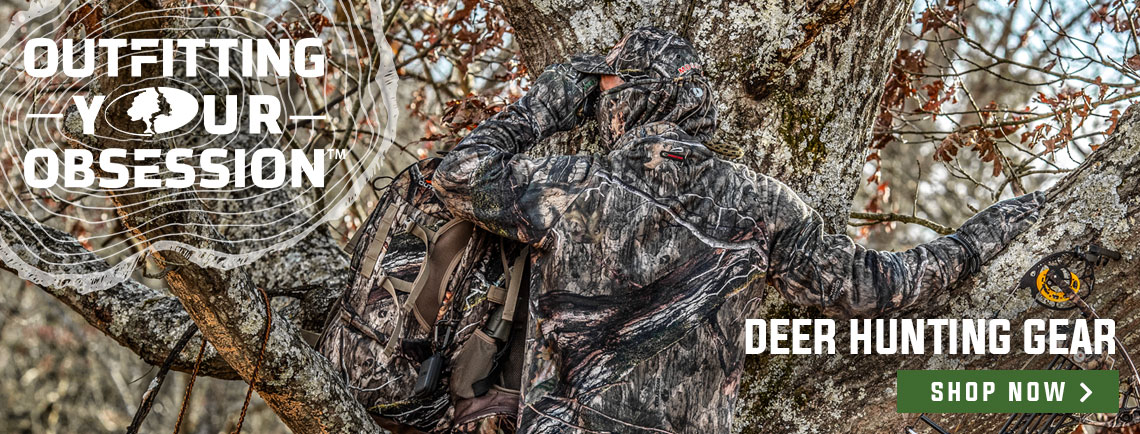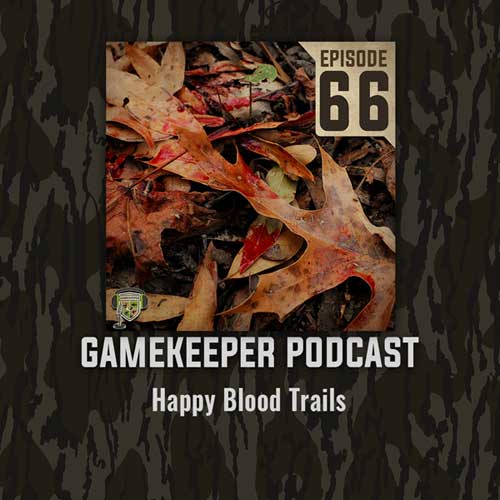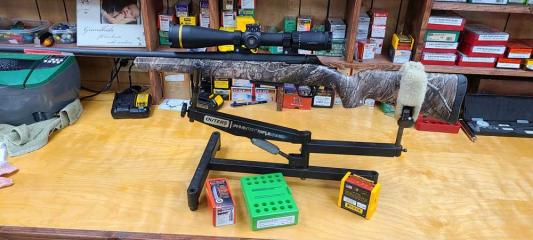We sat down with the guys from On Track K9 Deer Recovery in Kentucky to learn all about training dogs to track blood trails.
From choosing the right breed to getting the right gear and equipment, we’ve nailed down what you need to know to get started.
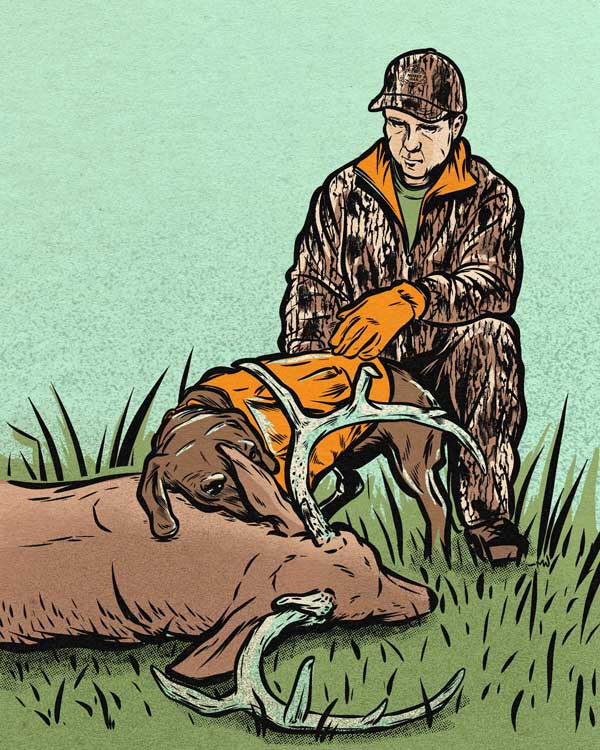
What Gear Do You Need to Teach Dogs to Blood Trail?
To make it easy, the absolute essentials you’ll need are:
- Deer Liver
- Deer Blood
- Lead (Length and Use depending on State Laws)
- GPS App or Flag Markers
- Paracord Rope
- Flashlight
The deer liver serves as the “reward” or the “find” at the end of the trail. It’s important to have a big ticket item that they can associate with deer that they’re tracking down. Some dogs prefer deer legs, some prefer liver.
Deer blood, is, of course, needed to create your trail. You’ll dip your paracord rope into the blood and drag it along behind you in order to leave the scent. You can also bring a squirt bottle filled with blood to help guide their nose on the right path.
GPS Apps like OnX are useful when creating longer trails so you can see exactly where you were when you were creating the scent trail. If you prefer to mark your trail with flags, that works just as well, too.
Most states require a lead on dogs when they’re tracking in the woods. The length of the lead depends on the state, so be sure to do your research beforehand and make them practice while on the lead.
If you live in a state that doesn’t require a lead, it’s best to invest in a collar with GPS tracking in it so you can make sure you know exactly where your dog is if he’s run off hot on the scent.
You’ll also want to practice at night using flashlights, as this will likely be the real-time scenario. Let your dog get used to the flashlights and gear like ATVs and side by sides, as they’ll be riding in a lot of different vehicles if you plan to service your dog to others.
Getting Started with Blood Trailing Training
You can start training a puppy as early as 2 months to follow a track, though you might want to wait until they’re a bit older and more focused.
Take a paracord rope and tie it to a stick. Dip the rope in the blood and drag to make your trail. Leave a deer liver or leg at the end of the trail for them to find. You can also add larger pools of blood by taking a squirt bottle and adding more scent and blood along the way.
Make sure you’re walking around all over the trail after you’ve set it. Weave in and out through the entire area you’re training. You want to make sure the dog is keyed in on the blood scent and not just tracking your scent! You can use a cane pole or fishing pole to put distance between you and the blood you're dragging if the dog is still keying in on your scent.
Just like any situation, you’ll start out with easy trails and let them progress to harder, longer, and older trails. Keep them short at the beginning and heap lots of praise when they find the target, indicating to them that they’re doing what you’re wanting them to. Make sure they’re having fun, especially when they’re young.
Add creeks, ditches, twists and turns, even 90-degree surprises in your trails as they advance, and eventually allow them to age a few hours at a time, up to 6 or 8 hours by the end of their training.
A really good dog can do a “cold trail,” which is a scent or blood trail that’s been sitting for over 24 hours. Bloodhounds are able to do these with a lot of time and experience under their belt.
You’ll also eventually want to run a trail through an area where lots of deer are moving so that they learn to focus on the bleeding deer and not get distracted by a live deer scent and start to track that.
Lastly, some trainers take Q-tips to the back hoof of a dead deer to extract a pheromone that they dog will need to learn to identify. You can put the scent on a rag to then drag in the woods to help them make the connection with the blood. If dogs can learn to key in on this pheromone, then they wouldn’t even need the blood scent to track.
Practice 2-3 times a week, but not so much that they get burnt out. You’ll want to train at night, too, to help replicate the real thing. Flashlights can spook a dog at first, so make sure they're alright with headlamps and flashlights shining while they work.
There’s nothing like the real thing, so they best practice they can get is just getting out and doing it once they’re ready! It’ll all come together for them then.
Best Breeds for Blood Trailing
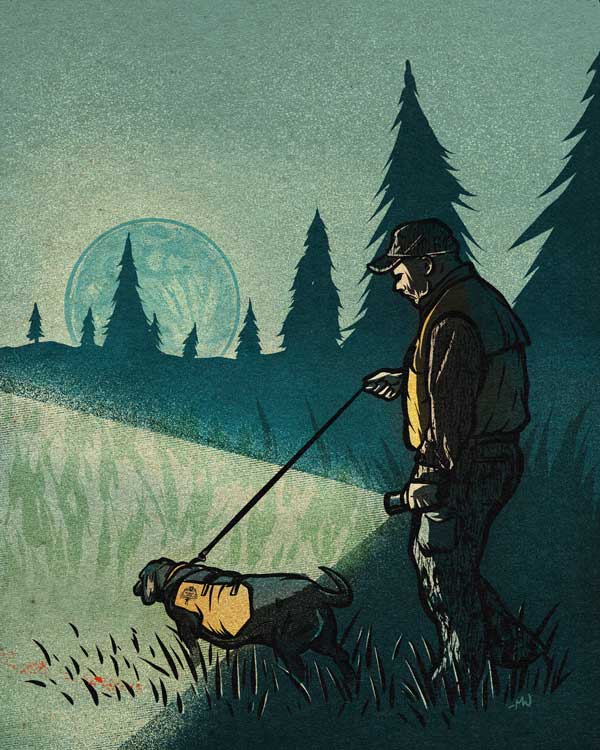
One of the best blood trailing breeds is, unsurprisingly, a blood hound. However, another excellent breed for blood trailing is a wire hair daschund. The little dogs are low to the ground and sport floppy ears perfect for helping scent waft to their nose.
Bavarian Mountain Hounds, Deutsch drahthaars, and Curs are also excellent tracking dogs.
Labradors and other sporting dogs are fine to train, too, and plenty of mutts have gone on to become great local blood trailing stars. With practice and encouragement, you can help just about any dog succeed.
Some positive traits to look for when choosing a dog to train to blood trail are independence, nose, willingness to please, and stamina.
Dangers to Avoid When Blood Trailing
It’s important to keep the dangers of the woods in mind when training your dog to track down deer or other critters.
The number one danger is snakes. You'll be weaving in and out of some heavy timber, most likely, and depending on the time of year, you're likely to encounter a snake. Go ahead and be prepared in case your dog gets bit. Keep the right dosage of Benadryl for their size and weight in your pack in case of emergency, and know where the nearest animal hospital is.
You also want to make sure you’re tracking a dead deer. If the deer is alive at the end of the trail, the dog can become an easy target for the dying deer to take out its anger and frustration. Many blood dogs have been killed by an angry buck at the end of their trail. If your dog is on a lead, this danger is less likely, but you still need to bring a weapon in case the deer is still kicking.
Remember, success looks different to every dog. Make sure they’re having fun while they’re training, and they’ll be happy and excited for the real thing when the time comes. Keep your buddy happy and safe and they’ll find you that deer!
Special thanks to On Track K9 Deer Recovery.
For more advice on Blood Trailing, listen to the comprehensive Gamekeeper Podcast about all things tracking.
